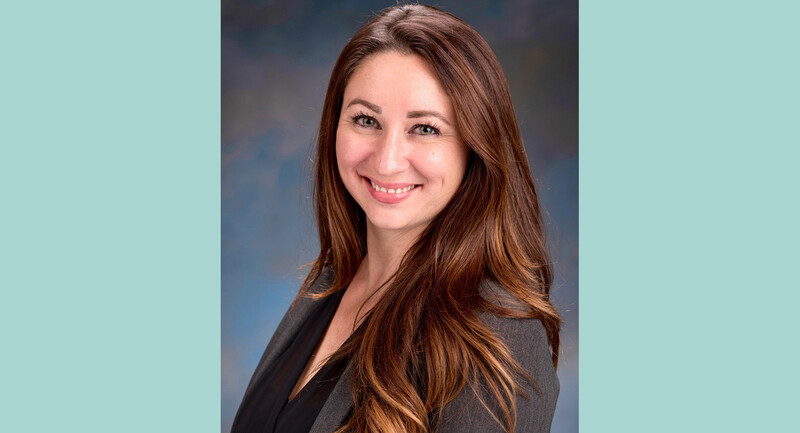The United States and many other countries around the world are witnessing an unprecedented emphasis on teacher preparation and teacher quality (National Academy of Education, 2009). Although teacher quality is assumed to be an essential ingredient in students' achievement and other school outcomes, it is not a single concept with a single meaning. Rather, the term has come to encompass an array of complex and controversial issues, including teacher recruitment, teacher qualifications, preparation programs and pathways, induction programs for new teachers, professional development, teachers' working conditions, teacher assessment and effectiveness, practices regarding hiring and compensation, and the attrition and retention of the teacher workforce.
This article takes stock of teacher preparation as one aspect of the larger concept of teacher quality by identifying 10 major trends. The list moves from larger issues related to national agendas and policies, to mid-level issues related to teacher-preparation structures and program types, to more specific issues regarding the content of the professional teacher-preparation curriculum.
1. Linking Teacher Preparation, Teacher Quality, and the Economy
There is an emerging consensus that the caliber of the U.S. education system is causally linked to the health of the economy. Here, the argument is that the country's success in a globalized society depends on preparing its citizens to meet world-class academic standards and master complex skills. However, national and international assessments indicate that many U.S. students are unprepared for either work or higher education, especially in math and science. Thus, the argument goes, we need radical reforms, including rigorous new standards and assessments for students, a more talented and effective teaching force, and a drastically revamped system of evidence-based teacher education.
President Obama (2009) and Secretary of Education Arne Duncan (U.S. Department of Education, 2009) consistently advance this argument. It is also evident in projects like the Common Core State Standards Initiative, an effort to adopt rigorous common standards for high school students across the states (National Governors Association, Council of Chief State School Officers, & Achieve, 2008). The bottom line is that the economic prosperity of the United States depends on the ability of all its citizens to compete in the knowledge economy—which depends on teachers and schools.
2. Recognition of the Teacher-Quality Gap
A second trend is the call for action regarding the teacher-quality gap. The argument here is that schools with large numbers of poor and minority students are most likely to have teachers who are inexperienced, teaching in areas outside their fields, or otherwise unqualified. Thus, the teacher-quality gap exacerbates the achievement gap.
Those calling for a response to the teacher-quality gap have sharply divergent views about the location and timing of initial teacher preparation. For example, some advocates of professional teacher preparation (see Darling-Hammond, 2007) argue that all teachers should be fully prepared and certified in dramatically improved university programs before taking full responsibility for students. Critics of university-based teacher preparation (see Peske & Haycock, 2006), on the other hand, champion alternate pathways into teaching, which provide abbreviated preparation prior to full-time classroom responsibility, coupled with close mentoring and continued study during the first years.
Despite their differences, however, advocates of reducing the quality gap argue that all students have the civil right to high-quality educational opportunities. This is dramatically different from simply claiming that all students must achieve to the same high standards despite unequal opportunities.
There are numerous proposed remedies for the teacher-quality gap, some of which are inconsistent with one another. These include alternate routes into teaching, which are intended to draw from a broader pool of well-qualified teacher candidates; new data systems linking teachers, students, and teacher preparation, which would hold preparation programs and pathways accountable for students' learning; revised hiring and assignment practices, which would ensure that well-qualified teachers are distributed to high-need schools; monetary and other rewards connected to effectiveness; improved mentoring, especially for teachers going into high-need schools; and common standards and assessments for all teacher candidates, regardless of entry path.
3. Accountability for Student Learning Outcomes
Increasingly, teacher preparation programs and pathways are being held accountable for student learning either by external evaluators or by each program's own high standards. Current approaches fall into four categories (Cochran-Smith, Gleeson, & Mitchell, 2010): (1) evaluating (and then reforming or even eliminating) various preparation programs and entry pathways according to the achievement scores of the students taught by graduates of those programs and pathways; (2) evaluating programs and pathways according to whether teacher candidates demonstrate teaching behaviors during the preparation period that are correlated with students' test scores; (3) evaluating teacher candidates by assessing the classroom learning opportunities they create during their preparation period, along with how their students perform in response; and (4) evaluating programs and pathways by assessing the classroom learning opportunities that graduates create during the early years of teaching, along with how their students perform. These four approaches diverge in terms of what counts as evidence of student learning, whether the evidence is collected during or after preparation, how evidence relates to the daily work of classrooms, and who is collecting and using the evidence and for what purposes.
4. Statewide Data Systems Linking Teachers, Students, and Preparation
Some states are now developing statewide longitudinal data systems that link students' test scores with data about their teachers, including the institutions that prepared them. The basic premise here is now widely, although not universally, accepted: The effectiveness of preparation programs and pathways should be assessed in terms of student and other outcomes and results rather than inputs, such as curriculum or resources. Federal funding is now available as an incentive for states to develop these systems, and efforts are underway or already in existence in Texas, Florida, Ohio, and elsewhere.
The most fully developed of these is the statewide Value-Added Teacher Preparation Assessment Model in Louisiana (Noell & Burns, 2009), which Secretary Duncan consistently praises as exemplary. Using a large longitudinal database, the Louisiana system assesses the effectiveness of preparation programs throughout the state on the basis of the test scores of the students of teachers who graduated from the various institutions. This system, which identifies exemplary programs as well as programs that do not measure up in terms of their graduates' estimated contribution to student achievement, is intended to drive continuous program improvement.
To improve teacher quality, a number of states, including California, Connecticut, and Tennessee, have moved away from traditional teacher certification tests and now use performance assessments with standardized assessment rubrics as part of the teacher licensure process. The California Teaching Performance Assessment (CalTPA), for example, is a standardized statewide certification assessment developed in conjunction with the Educational Testing Service. In addition to the required coursework, teacher candidates must pass four performance-based tasks: adapting and analyzing lesson plans based on case studies, planning and enacting a class lesson, developing and implementing a class assessment, and incorporating all the required demonstrated tasks in a "culminating teaching experience" (California Commission on Teacher Credentialing, 2010).
California also has an alternative to the CalTPA. The Performance Assessment for California Teachers (PACT) was developed by a group of California higher education institutions and is embedded within a teacher candidate's practicum experience. Intended as a comprehensive and in-depth assessment that aligns more closely to the curriculum of the preparation program, PACT requires candidates to develop and analyze their own practice by producing a portfolio highlighting lesson plans, assessments, reflections, and videotaped examples of instruction (Pecheone & Chung, 2006).
6. Proliferation of Multiple Routes into Teaching
Fueled by state and national mandates and teacher shortages in certain areas, alternate routes to teacher certification and nontraditional pathways into teaching have proliferated. Encouraged by many of the secretary of education's annual reports to Congress on teacher quality, alternate certification programs now exist in all 50 states and produce about 20 percent of the nation's teachers (Feistritzer, 2009).
Despite the tremendous growth in so-called "alternate" programs, there is little agreement about the definition of the term (Humphrey & Wechsler, 2007). Moreover, although these programs differ dramatically from one another in purpose, recruitment targets, form of preparation, and support, most of them now involve some kind of partnership with universities. This adds to the problems of making simple comparisons between traditional and alternate programs, especially if "traditional" is intended to differentiate college and university programs from others.
For example, Teach for America, the best known of the alternate certification programs, recruits recent college graduates who complete a six-week training session prior to their placement in high-need schools and then participate in professional development throughout their two-year commitment. The New Teacher Project actively recruits mid-career professionals and works directly with school districts to develop paths to certification that satisfy state requirements. Alternate programs are becoming increasingly popular, due in part to the downturn in the economy. Teach for America received 35,000 applications in 2009, a 42 percent increase from the previous year; and the New Teacher Project applications increased by 44 percent (Quaid, 2009).
7. School District–Based Teacher Residency Programs
One type of teacher preparation that has elements of both university-based and alternate programs is the teacher residency program, which is flourishing in Chicago, Illinois; Boston, Massachusetts; and Denver, Colorado. In residency programs, teacher candidates complete a master's degree while working for a full year in classrooms alongside teacher-mentors.
With the dual goals of increasing teacher quality and retention, programs such as the Denver Teacher Residency take what they call a "comprehensive, research-based" approach to teacher preparation by focusing on highly selective resident and mentor recruitment, focused coursework, closely mentored classroom experiences, and targeted school district placement in shortage areas (Urban Teacher Residency United, 2010). Strongly supported by the Obama administration and funded as part of the Title II Teacher Quality Enhancement Grants, residency programs are beginning to show some evidence of effectiveness in recruiting minority teacher candidates and retaining new teachers (Berry et al., 2008). The hallmark of residency programs is that they are designed to fill the teacher supply needs of particular school districts (for example, teachers in math and science who work with English language learners) and are closely aligned with a district's curricular and student achievement goals.
8. Practice as the Center of Teacher Preparation
In addition to the current emphasis on teacher quality, there is a smaller, but growing, emphasis on practice as the content of professional preparation. The rationale here is that teacher preparation has paid too much attention to teachers' knowledge and beliefs and not enough to the "core tasks" of the "work of teaching" (Ball & Forzani, 2009). The point is to make mentored teaching performance—especially school-based clinical practice in which the bottom line is students' learning—the center of teachers' preparation in ways that are akin to the hospital-based clinical preparation of doctors.
Examples of this trend include the University of Michigan's redesigned curriculum, which centers on careful training in key practice-based tasks; the University of Washington's redesigned program, in which every course is in some way school-embedded; and Chicago's Academy for Urban School Leadership program, which integrates coursework and a yearlong teaching residency. On a larger scale, the National Council for the Accreditation of Teachers (NCATE) has launched a major initiative to make teacher preparation more clinically based to meet the needs of schools and also to effect a sea change in university teacher education (Sawchuck, 2010). This would promote not simply better student teaching, but a fundamentally differently focused curriculum with practice at its center.
9. Teachers as Researchers
Another curriculum trend in teacher preparation is preparing teachers to be researchers in their own schools and classrooms. The assumption here is that teachers need to gather, interpret, and use data about students' learning and other aspects of teaching, learning, and schooling to continually rethink and improve their teaching practice. When teachers themselves are also researchers, the old problem of how to apply theory to practice no longer applies. Rather, the assumption is that practice itself is in part theoretical and that theory and practice are related dialectically (Cochran-Smith & Lytle, 2009).
Some examples of this trend include the yearlong Boston Teacher Residency program, in which residents gather case-study data about individual students and also identify patterns of whole-class learning that inform instruction, and the University of New Hampshire's preparation program, in which teacher candidates complete a yearlong internship in a school, generating questions, gathering student learning data, and modifying curriculum and instruction on the basis of these data.
Across the United States and in many other nations, teacher research, action research, and other versions of practitioner research and inquiry are now part of the curriculum of professional preparation and continued professional development. For example, there are now many new real and virtual teacher networks, collaboratives, and collectives, such as the Web-based Breadnet, which links rural and urban teachers focusing on language and literacy; the Carnegie Foundation's CASTL program, which makes teachers' and teacher educators' practices available through multimedia technology; and the Teacher Leaders Network (see p. 36), a virtual community of committed educators launched by the Center for Teaching Quality to emphasize the complexity of teachers' work (Cochran-Smith & Lytle, 2009). These and other groups have helped deprivatize teachers' work and also serve as a resource for others.
10. Preparation to Teach Diverse Learners
Over the past several decades, the school population in general classrooms has become increasingly diverse in terms of students' cultural, ethnic, religious, and linguistic backgrounds and in terms of the range of student ability. Many teacher-preparation programs and pathways now focus their curriculum specifically on preparing teachers to meet the needs of these diverse learners.
At the University of Wisconsin–Madison, for example, all teacher candidates must fulfill a multicultural education and human relations requirement consisting of coursework and school-based experiences focusing on diversity. At Boston College, all teacher candidates learn specific strategies for working with English language learners and students with special needs. In the Boston Teacher Residency program, all residents obtain dual certification in a content area (for example, math or science) and special education.
In addition, some state departments of education have changed teacher certification requirements to better serve the needs of the diverse student population (Morrier, Irving, Dandy, Dmitriyev, & Ukeje, 2007). Alaska and North Dakota now offer certification in multicultural education. California requires all teachers to complete advanced coursework in teaching English language learners and students with special needs to obtain full licensure.
The Debate Goes On
Some of these teacher-preparation trends are now widespread, and many of them are growing. However, nearly all are controversial or have been critiqued from a variety of perspectives.
Using High-Stakes Tests
Not surprisingly, given the complex system of test-based accountability that is now firmly entrenched at local, state, and federal levels, many of the trends are related to heightened teacher accountability for students' learning. Although newer and differentiated ways of assessing students' learning are implicit in some of the trends, such as those related to teachers' performance, underlying many of the trends is the assumption that standardized test scores are valid indicators of students' achievement, with yearly gains the principal goal.
Countless critiques have pointed to the reductionism involved in equating students' learning with high-stakes test score gains rather than using multiple and more expansive measures of learning. Critiques of this sort also emphasize that the purposes of education and the goals of teacher-preparation programs and pathways are broader than simply increasing students' academic achievement. Other goals include strengthening students' will and capacity to participate in a deliberative democracy and to question the current system, offering a full curriculum that includes the arts and citizenship, working collaboratively with others to make schools more caring and just, and establishing close links with communities and parents.
Looking at Out-of-School Factors
Many critics point out that it is exceedingly difficult to develop reliable assessment systems that link teacher, student, and teacher-preparation data in ways that account for the multiple and complex mediating variables that influence students' achievement over time. Thus, some critics argue that it is nearly impossible to draw conclusions about the efficacy of teacher-preparation programs and pathways on the basis of eventual student outcomes over which the preparation programs have little control.
Along similar lines, many critics reject accountability systems of the No Child Left Behind (NCLB) sort. For example, the Broader, Bolder Approach (Economic Policy Institute, 2009), supported by a primarily Democratic coalition of social scientists, educators, and policy experts, argues that NCLB-type accountability frameworks work from two false premises: that school factors are the major reason for low achievement and that policies targeting standards, testing, and teacher education can overcome the effects of low socioeconomic status. Instead, the Broader, Bolder Approach argues for school and teacher-quality reforms, improved early childhood and health programs, and broader child and adolescent development goals. It also promotes the use of multiple and differentiated assessments, such as school inspections, which include accountability for citizenship and human development outcomes as well as academic ones. The goal of this agenda is to reduce the persistent association between social and economic disadvantage and low student achievement rather than to simply boost test scores.
Challenging the Status Quo
Several current trends in teacher preparation have to do with greater alignment between state and school district goals and teacher-preparation goals as well as with more school-embedded learning for teachers. The advantages notwithstanding, there are issues associated with tighter alignment between teacher preparation and K–12 curriculum and testing programs.
Some critics have argued that tight alignment of teacher preparation with school procedures and testing may undermine the potentially crucial role of university-based teacher education in the larger society—part of which is to question common school practices and labels and to challenge aspects of curriculum and teaching that reinforce existing inequities. As teacher preparation becomes more school-embedded, critics have suggested that new teachers may be less likely to question and challenge current practices.
Putting Practice at the Center
A half century ago, teacher-preparation programs concentrated on training teachers to display certain behaviors in the classroom. It was eventually concluded, however, that although teachers could be trained to produce almost any classroom behavior, these were "empty techniques" because they failed to account for the many decisions teachers had to make and the knowledge they needed to decide wisely.
The programs we've highlighted here in our discussion of the current trend toward practice-centered teacher preparation— such as Chicago's Academy for Urban School Leadership or the teacher-preparation programs offered at the University of Michigan and the University of Washington—are exemplary. They focus on complex teaching practices that involve intricate and multiple skills, such as probing students' understanding of complex mathematical operations or scaffolding English language learners' understanding of content. However, outsiders may miss the nuances involved and mistakenly equate teaching new teachers specific but complex practices with teaching them techniques that are unconnected to broader knowledge about human learning, subject matter, and pedagogy.
The Issues That Count
As these 10 trends suggest, issues related to improving teacher quality and teacher preparation have risen to the top of many different agendas and are currently being addressed in many ways. These include new policies and innovations within individual institutions, pathways, and programs as well as cross-institutional collaborations, national initiatives, and international gatherings in which policymakers and educators from around the globe learn from one another.
To a great extent, what teacher preparation will look like down the road depends on which meanings of teacher quality prevail and which of its many aspects those involved in local, state, and federal policies emphasize. However, the future of teacher preparation will also depend on the readiness of leaders in teacher preparation to respond to the United States' changing expectations of teachers and teaching— while also keeping their eyes on the greater goal of preparing citizens for a democratic society.








